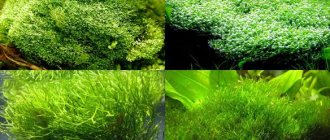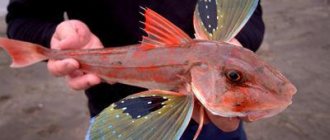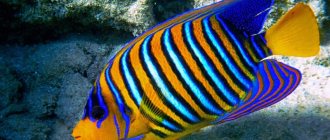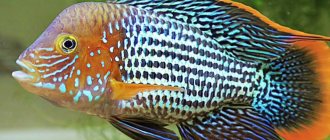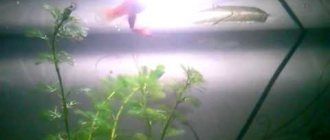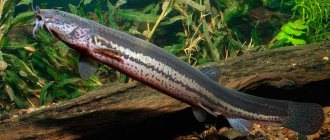Today, 70 species of loaches are known, which are included in 26 genera and two subfamilies.
In our region, such representatives of this numerous family as common loach, loach, sponge, spined loach and others are more common. This article provides information about the habitat of loaches, their lifestyle, behavior patterns, and the highlights of fishing for them.
Fish of the loach family: information
Appearance
In most cases, the body of these fish species is elongated and has the shape of a spindle or is slightly compressed on the sides. It is possible to notice fairly small scales on the body, but some of these species have no scales at all. This fish does not have a huge mouth without teeth, but antennae located near it, the number of which can be about 12. Along with this, the eyes are small, and the fins located on the back are very small. The anterior part of the swim bladder is located in a bony capsule, and in some species the swim bladder is located specifically in such a capsule.
Fish of this family are not distinguished by their variegated coloring; therefore, brown, gray, yellow, brown and dark shades predominate. This coloring prevents predators from noticing fish at the bottom. Also, some of them will be able to change color depending on their habitat.
Loaches grow up to 18 cm in length, despite the fact that individuals are seen 30 cm long, or even more. In this case, a lot depends on the availability of food supply.
Habitats
Representatives of this family are seen in freshwater bodies of Asia, Europe, the Malay Archipelago, as well as in water bodies of North Africa.
In most cases, these fish choose bodies of water of different nature: these can be cold mountain streams with a rapid current, or rivers warmed by the sun's rays, flowing through flat terrain and not characterized by a rapid current. They are also found in lakes and ponds with standing water. Moreover, they are not demanding on the purity of water and can feel great in conditions of the presence of a huge amount of silt and lack of oxygen.
What do loaches eat?
The diet of these fish consists of various living organisms living on the bottom. They also eat insect larvae, as well as caddisflies. Loaches go out hunting at night, that is, at night or late in the evening.
Spawning period
Representatives of loaches, which have chosen mountain rivers for life, prefer to spawn in conditions when the water warms up to +8 degrees. Females lay eggs on sand, rocks or aquatic plants.
Those representatives of this species that inhabit ponds and lakes with stagnant water spawn at higher temperatures. In most cases, females lay eggs on plants.
Before the spawning process, loaches take on a more striking color, with the presence of yellow and red shades. Along with this, a “pearl rash” appears on the body of the fish, in the form of characteristic tubercles.
Behavior
Representatives of this family are distinguished by the presence of so-called abdominal breathing. Based on this, loaches will be able to live without trouble in wetlands, with the presence of a maximum amount of oxygen.
They prefer areas with a muddy or sandy bottom, which they use as their shelter, burying themselves in the sand or silt. They are mostly nocturnal.
Fishing
Due to their small size and peculiar behavior, loaches are not of commercial interest. In Russia, the sloth loach, one of the most striking representatives of the loaches, is of industrial interest. The fish has quite tasty meat and is one of the ingredients for making fish soup. Also, loach is used as bait when catching predatory fish.
The loach is bred artificially in some fish farms in Japan. From time to time you may notice a loach in an aquarium, because it has a rather interesting coloring and is unpretentious in its maintenance.
Reproduction
Reproduction of loach representatives usually occurs in summer or spring. The phenotype reaches sexual maturity at four years; during spawning, future parents are intensively fed in order to produce offspring. The female lays over 30 thousand brown eggs in algae or soil, which easily stick to the leaves. Six days later, tiny squeakers measuring 5 mm in size are born, which develop rapidly: after a year, the fry already reach 4 cm. Babies begin to search for food independently already in two weeks old.
Interesting fact: squeaks can remain without liquid for a long time, since they can breathe through gills, skin and intestines.
Loach fish are interesting representatives of the aquatic world, which differ in body shape, color and restless behavior. Squeakers are fascinating to watch, and their movements are smooth and graceful. However, pets, despite their similarity with snakes or eels, can not only diversify the appearance of the aquarium, but also benefit the owner by warning about possible weather changes.
Species of fish of the loach family
The loach family consists of countless species, among which are the species most familiar to us.
Loach
The common loach inhabits most of the water bodies of Eastern and Central Europe. This representative of the loach family has a yellow-brown back, a yellow belly, and dark stripes on its sides. The direction of the stripes is along the body. There are also albino loaches, which are distinguished by their white color, despite the fact that they are seen quite rarely.
The loach chooses bodies of water with slow currents and marshy banks. In addition, the loach is seen in the backwaters of large rivers, in lakes with a muddy bottom, as well as in swampy ditches with water. The loach constantly stays at the very bottom, invariably burrowing into the silt in order to hide from its enemies.
The loach is able to live in bodies of water with low oxygen content, thanks to an internal organ that is filled with air. To do this, the loach has to rise to the surface in order to fill this organ with air. In most cases, he does this at night, when he goes hunting in order to profit from something. Many skilled fishermen use this fact of its behavior by setting different traps at night.
The large length of the loach is about 25 centimeters. The loach does not tolerate sunlight, so it is active at night.
At the end of 2 years, the loach becomes a sexually mature individual. The loach spawns in the spring, like most fish. The female is capable of laying up to 100 thousand eggs at a time.
European loach
The body of this fish is distinguished by a brown color, with black spots located on it. European char can grow up to 18 cm in length, while the average individual grows up to 12 cm in length. Females are in most cases smaller than males. Loaches inhabit simple reservoirs in Eastern and Central Europe, and rivers in Siberia and the Far East. Char, for the most part, inhabits reservoirs with running water, despite the fact that it was also found in ponds with stagnant water.
The char spends the main part of its life at the bottom of the reservoir, hiding in snags or in the roots of trees. The fish leads a solitary lifestyle or lives in small groups. Loaches feed on various larvae and small invertebrates and small insects.
This fish spawns in May. Females lay eggs on the sandy bottom or on plants. For its part, char fish is included in the diet of predatory fish such as trout.
Tibetan loach
This representative of loaches is distinguished by a naked body with the presence of a skin fold that runs from the eye to the stigma. The fish is not huge and grows to a maximum length of 12 cm, despite the fact that there are individuals that grow up to 16 cm.
This small fish is seen in mountain rivers flowing into the Aral Sea, in the rivers of Tibet, in Lake Balkhash, etc.
This type of char prefers a pebble bottom or a rocky bottom. Able to live both in very cold waters of mountain rivers and in reservoirs warming up to +29 degrees.
Tibetan loach feeds on the larvae of various insects.
This fish spawns in the spring, at a water temperature of +8 degrees. During the breeding season, a “pearl rash” appears on the body of the Tibetan loach in the form of characteristic numerous small tubercles.
Single color sloth
It is not at all difficult to distinguish this representative of the loach family from other representatives of the family by the thick lips that surround the mouth of this fish. It is found in lakes such as Issyk-Kul, along with this there are a couple of subspecies of sloth fish. The fish grows up to 23 cm in length.
The gubach is of no interest to fishermen, regardless of its large numbers. Along with this, it is a favorite treat for pike perch.
Shchipovka
This is a small fish, up to 10 cm in length, inhabiting the waters of Europe and Asia. In Russia, it is seen in the rivers and lakes of Siberia and the Far East. The body of the spined loach is not significantly flattened on the sides and is distinguished by a rather variegated color, where yellow predominates, with the presence of black spots.
This fish prefers quiet waters of rivers, lakes and streams with a muddy bottom. In most cases, it buries itself in the silt, and at the same time, it can change its color to match the color of the bottom. The spined loach feeds on various small living organisms, such as crustaceans or insect larvae. It is most active at night.
This small fish spawns in the summer, in June-July, at a temperature not lower than +16 degrees. Spawning lasts until the end of the summer season. This fish is loved by some predatory fish, such as pike and pike perch. Fishing is also used by fishermen as live bait to catch predatory fish species.
Asian spined loach
This species of loach inhabits the warm reservoirs of the Kuban, rivers flowing into the Aral Sea, and the basins of the Danube River and the European rivers flowing into the Aegean Sea.
Along with this, the Asian spined loach differs from the common spined loach in that it prefers bodies of water with rapid currents.
Cross spider - description, characteristics, structure.
The cross spider is a fairly small spider, however, females are much larger than males: their length ranges from 1.7 to 4 cm, and the size of males is from 1 to 1.1 cm. The body of the cross spider is covered with a chitinous shell of a yellowish-brown color, which is reset during the next molt.
Like most arachnids, the cross spider has 10 limbs:
- 4 pairs of walking legs, at the ends of which there are claws,
- 1 pair of pedipalps, which perform the function of recognizing and retaining prey,
- 1 pair of chelicerae, which are needed to capture and kill prey. The spider's chelicerae are directed downward, and their hooks are directed inward.
On the last segment of the pedipalps in adult males there is a copulatory organ, which, before mating, is filled with seminal fluid and inserted into the spermatheca of the female.
The cross spider has 4 pairs of eyes, although it sees very poorly and distinguishes only blurry silhouettes, light and shadow. This deficiency is more than compensated for by a well-developed sense of touch, represented by tactile hairs scattered over the entire surface of the body. Some hairs react to chemical stimuli, others perceive air vibrations, and others pick up sounds.
The abdomen of the cross spider is round and devoid of segments, its upper part is decorated with a cross. On the lower part of the abdomen there are 3 pairs of arachnoid warts containing about a thousand glands that produce threads for various purposes: for building trapping nets, arranging a shelter, weaving a cocoon.
Cross spiders, like most spiders, have external digestion: they are unable to digest food themselves, so they are forced to build trapping networks. The cross spider injects digestive juice into the victim it encounters, wraps the prey in a web cocoon and waits until the “dinner” is digested and turns into a nutrient solution that can be drunk.
The respiratory organs of the cross spider are located in the abdomen. They are represented by a pair of pulmonary sacs with a large number of leaf-like folds. There is air inside the folds, and hemolymph circulates through them (this is the name of the liquid that is found in the vessels of spiders instead of blood), enriched with oxygen. In addition to the pulmonary sacs, the respiratory organs include two bundles of trachea-tubules, which open with a hole on the underside of the abdomen.
The circulatory system of the cross spider is not closed. The heart is located in the dorsal part of the abdomen, in appearance it resembles a long tube, large blood vessels extend from it. From the anterior end of the heart, which has three pairs of holes, ostia, the anterior aorta departs, branching into arteries. The terminal branches of the arteries pour hemolymph into the body of the spider, which washes all the internal organs of the spider, transporting oxygen and necessary nutrients to them. When hemolymph circulates through the pulmonary sacs, gas exchange occurs, then the hemolymph enters the cardiac pericardium and through the ostia into the heart itself. The hemolymph of the cross contains a copper-containing pigment - hemocyanin, which has a blue color.
The excretory system of the cross spider is represented by coxal glands and malpighian vessels. Malpighian vessels in the form of tubes are nothing more than blind protrusions of the intestine, and they open into the intestine of the spider, located between the midgut and hindgut. They allow metabolic products to be absorbed from the body cavity of the cross. The coxal glands are a pair of sac-like structures located in the cephalothorax. A system of canals departs from them, which ends with excretory ducts at the base of the walking legs.
The life cycle of the cross spider, depending on the species, is about 1-2 years.
Fishing for loaches
This fish can be caught all year round using simple gear. To do this, it is enough to arm yourself with a simple float rod and patience. Also, do not forget that loaches are active at night, so it makes no sense to count on a catch during the daytime. Along with this, the tackle should have a narrow line and a small hook.
The following is used as a hook attachment:
- Worm.
- Maggot.
- Bloodworm.
Loaches are particularly resilient, which is why fishermen use them as live bait to catch fish such as pike or pike perch. Such bait can remain active on the hook for up to a week, despite the fact that in most cases this is not necessary.
Loaches are not huge fish, which are found in most reservoirs in Europe, Asia and North Africa. They have no interest in commercial fishing, but amateur fishermen actively catch loaches. They are used as bait on a hook to catch predatory fish. Despite this, loaches are distinguished by quite tasty meat. Based on this, they are caught in some regions to prepare various dishes at home. In order to catch enough loaches with a fishing rod, this is quite a troublesome task. Based on this, many fishermen use special gear, which is installed at night, and checked in the morning. In most cases, a couple of dozen individuals are caught in such gear during the night.
Loach meat contains essential substances such as vitamins and minerals. Along with this, loach meat has a pleasant sweetish taste, and it is suitable for making various dishes. You can fry this fish and prepare first courses from it, like fish soup. The ear is necessary because all the necessary substances are stored in it.
Also, in Asian countries, loaches feed on small insects, destroying quite a lot of mosquitoes, as well as malaria ones. Based on this, it makes sense to talk about the significant benefits of these small fish.
If you show your imagination, catching loaches will not be particularly difficult and then you will be able to enjoy the taste of this unique fish.
Where does the cross spider live?
Cross spiders are widespread throughout the temperate and tropical climate zones of the globe. Species of crosses are found in Europe, Russia, Africa, North America, and Asian countries. Most spiders live in damp, low-lying places near water bodies, in forests, parks and gardens - wherever there are trees, between the branches of which it is convenient to weave catching nets. Often the round web of the cross can be seen in window and door openings, as well as under the roofs of neglected buildings.
Using loaches for bait
As already mentioned, in Asia the loach is caught exclusively for one’s own table. Russians are more picky, and therefore much more often use this inhabitant of silt and mud as bait. And for good reason. Pike, perch, burbot, and catfish consider loach to be the same delicacy as children consider ice cream! What else is beneficial about such bait? Vitality!
Catch a loach, put it in a bucket, and it will live in it for at least a week, vigorous and healthy. Just remember to change the water to fresh water twice a day. In general, if you want, eat it yourself, if you want, catch large river predators... In any case, good luck!
How to choose
The taste and quality of seafood are interconnected, so the freshness of the fish is a significant argument. To avoid purchasing a low-quality product, it is recommended to pay attention to:
- Eyes. Cloudiness is unacceptable. The eyeball is not bulging or falling inward.
- No rusty marks or ice chips.
- There are no various breaks or cracks on the carcass. A broken tail fin indicates that the fish is not fresh.
- The fins are strictly pressed to the body without damage.
- When pressing on chilled fish, the dents are invisible.
- The color of the gills is always pinkish. If you see a brown or gray color, you can talk about the spoilage of the seafood product.
It is advisable not to put off preparing a dish from a chilled carcass for a long time, but to cook it immediately or after 4 hours. When frozen, it can be stored for up to 7 months if the temperature in the refrigerator compartment is maintained at -18 degrees.
"Important! Every product in a fish shop must be certified. Buy in specialized stores"
Nutritional value and calorie content
Red meat is considered one of the low-calorie meats. Since 100 grams of seafood contains 135 kcal.
Nutritional value per 100 g:
- saturated fatty acids – 0.905 g;
- cholesterol – 60 mg;
- ash – 1.12 g;
- water – 72.78 g;
- protein – 20 g;
- carbohydrates – 0;
- fats – 5.86 g.
Price for 1 kg.
Char fish is sold in specially designated premises. Finding a specimen of this fish on grocery store shelves is rare. The price of a seafood product varies in relation to the costs incurred for transportation and fishing. Changing exchange rates are not reflected in the price in any way. Import is not profitable for Russia, since it provides itself with the product in fish stores. Char are harvested in the seas near Spitsbergen and in the Far East. Fish arrives on store shelves in carcasses:
- uncut;
- gutted;
- cold smoked.
It is possible to buy chilled wild char only in its habitat. Transportation to other regions - frozen. The average price for seafood per 1 kg is:
- fresh frozen fish 350-570 rubles;
- cold smoked 450-620 rubles.
For women
Regular introduction of char into the diet has a positive effect on the skin. It becomes soft and elastic. In people prone to acne, the likelihood of its occurrence is reduced significantly. Unfavorable factors coming from outside can cause significant harm to the skin. Char fish acts as an antioxidant, increasing the body's strength against harmful influences. At the cellular level, regeneration is enhanced and the walls of blood vessels are strengthened. Thanks to this, a rejuvenating effect is manifested.
Web of a cross spider.
Cross spiders weave a new web almost every day, because the old one very quickly becomes unusable due to holes formed by the entry of both small prey and large insects into the web that are unsuitable for eating. The cross weaves its web at night, guided in the dark by a well-developed sense of touch. This behavior is completely justified: insectivorous birds, the main enemies of spiders, are already sleeping, and the owner of the webs is practically invisible at night. By morning the fresh fishing net will be completely finished.
The cross spider weaves a web with a strictly defined number of radii and spirals, and the spaces between the turns of the adhesive thread are always the same. This automatism is inherent at the genetic level, so it is not surprising that young individuals are able to weave a trapping net no worse than adults. Young males build trapping nets only before reaching sexual maturity, and then wander around in search of a mate. Therefore, males eat little and grow poorly, which explains the pronounced sexual dimorphism of cross spiders.
Culinary benefits of char
Red char can compete well with salmon and pink salmon.
Char meat, in addition to its amazing taste, has a number of useful properties that are highly valued by chefs.
It has a high content of:
- Minerals such as potassium, sodium, magnesium, copper, iron and calcium;
- Vitamins of various groups;
- Healthy fatty acids.
Thanks to this composition, nutritionists recommend red char meat to all people who adhere to a healthy lifestyle.
By regularly including roasted, boiled, and salted char meat in your diet, you can quickly notice beneficial changes in the body:
- Increases efficiency and improves brain function;
- Metabolism accelerates, which stimulates the production of hormones and enzymes;
- Due to the high calcium content, bones, teeth and hair are strengthened; – the body’s resistance to inflammatory processes increases due to the consumption of fatty acids.
You can list the advantages of this extremely healthy fish ad infinitum, but it’s better to just try it, especially since the price of this fish is slightly higher than the price of pink salmon, but it has much more beneficial properties.
What does the cross spider eat?
The spider's web contains flies, mosquitoes, small grasshoppers, aphids and midges, which form the basis of the spider's diet. In one day, an adult female can eat an amount of food equal to her own weight. When a very large or poisonous insect becomes entangled in its webs, the spider immediately breaks the threads surrounding the unsuitable object. Crusaders are wary of flies and wasps that can lay their eggs on living creatures and try to avoid them. In the opposite case, winged insects descend on the spider from above and lay eggs, which is a favorable environment for the development of their larvae.
During the hunt, the white cross sits in the center of the web or in a shelter of foliage located nearby. The vibration of the threads is instantly caught by sensitive hairs, and the cross with its poisonous chelicerae kills the victim, and then pours digestive juice into it so that the prey is digested. Only after this does the cross spider eat its victim.

